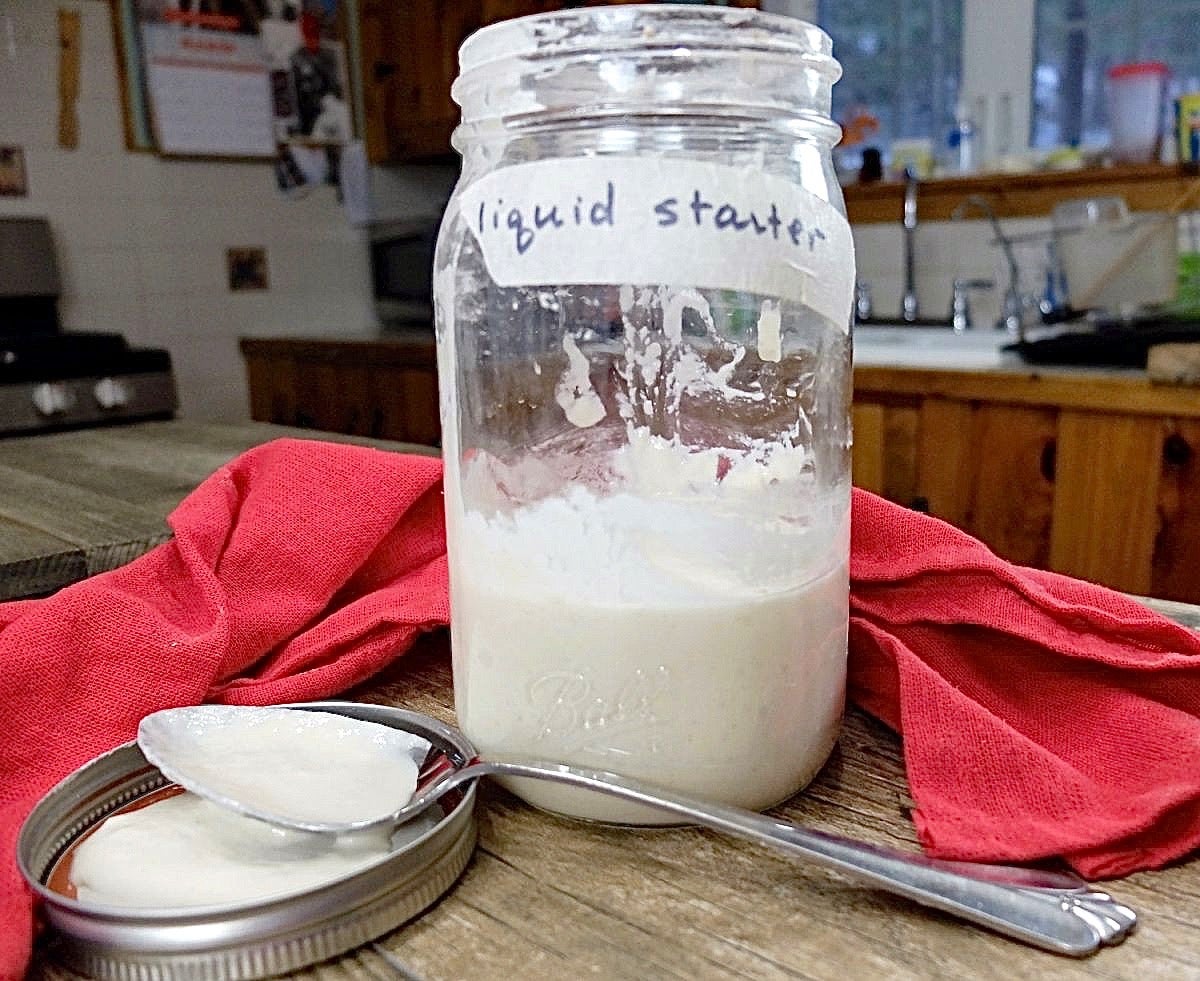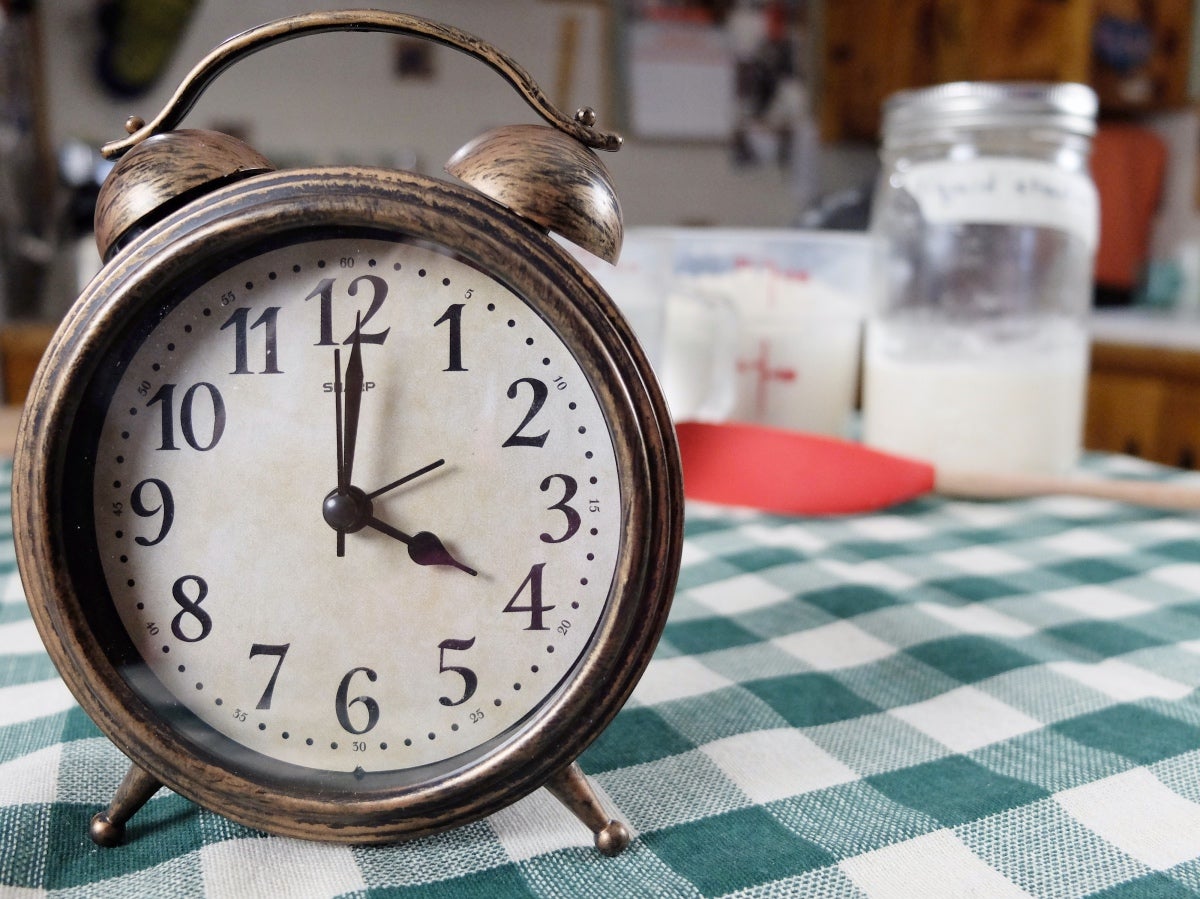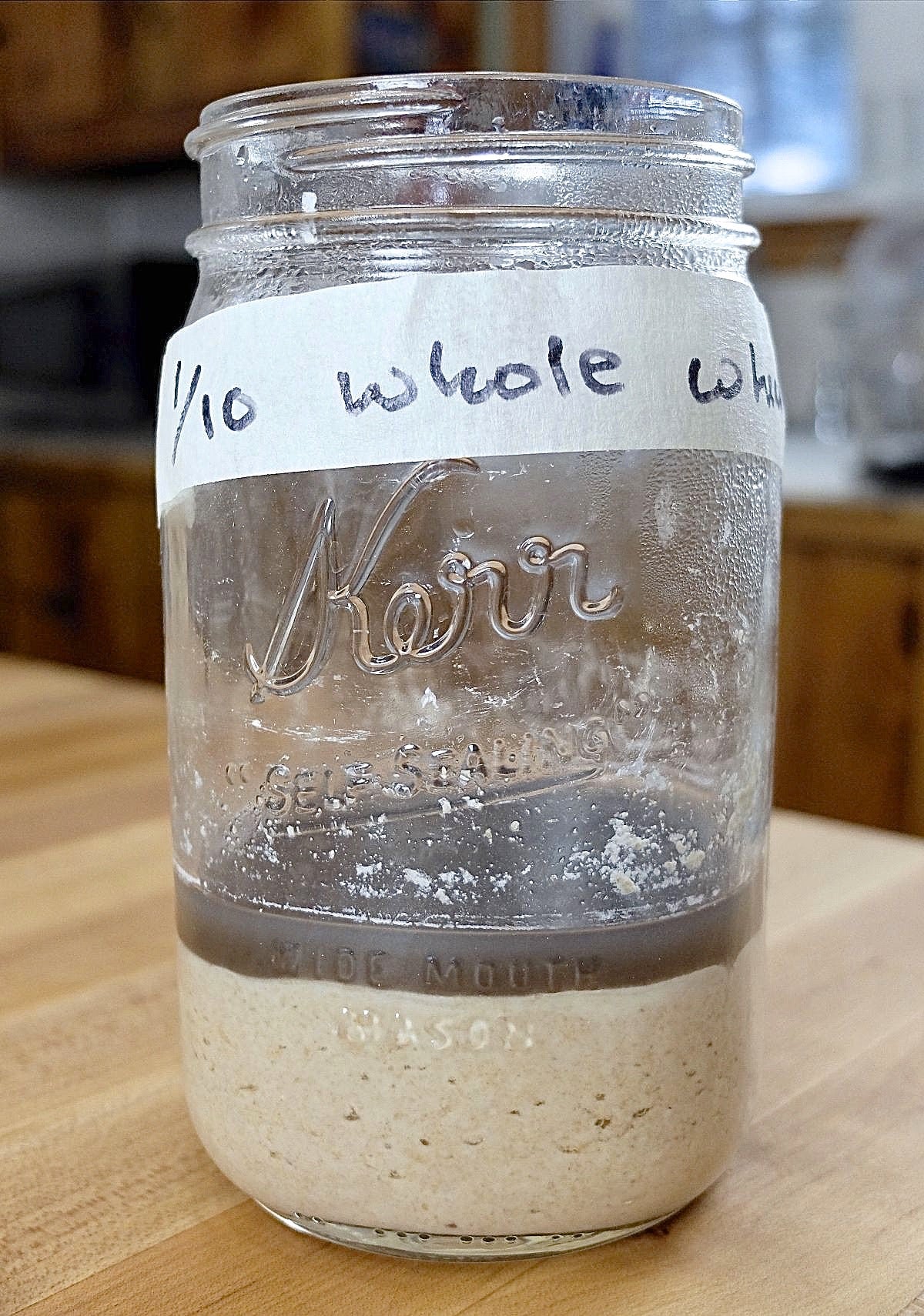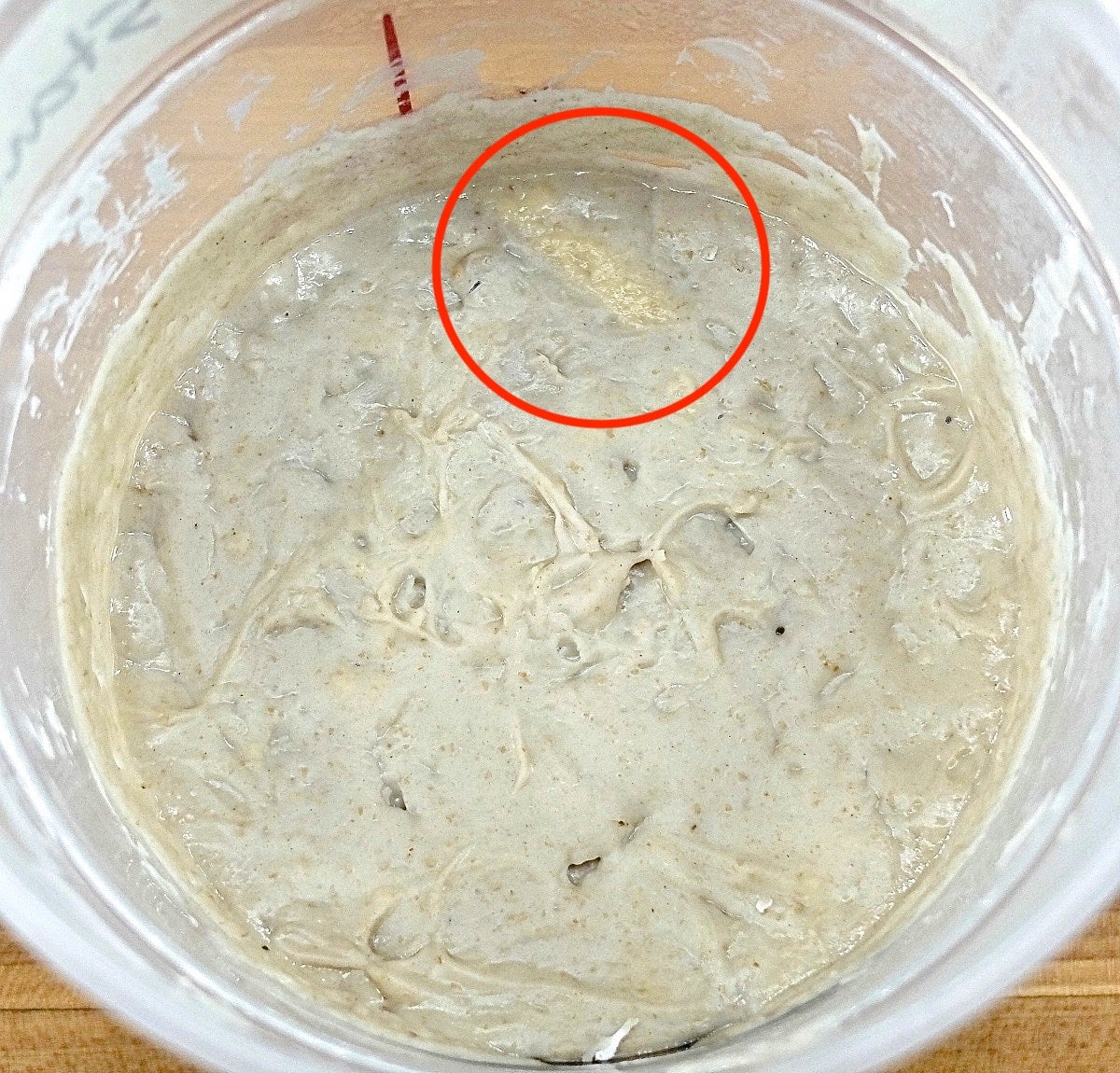


“Did I kill my starter?” This is a surprisingly common sourdough question on our Baker’s Hotline. Novice and experienced bakers alike worry about the viability of their starters and call us for sourdough starter troubleshooting advice.
For many sourdough bakers, the underlying biochemistry at work in their starter remains a bit of a mystery. Thankfully, it's quite possible to bake great sourdough bread while still being a little fuzzy when it comes to what’s actually happening in that little jar of starter.
The 6 to 10 days it takes to create a healthy and mature sourdough starter from scratch requires slightly more attention to "death threats," because a fledgling starter hasn't yet developed the defenses that characterize a mature starter. But once your starter is fully developed, it's really pretty darn hard to kill.
And if you've purchased a sourdough starter from us, rest assured that it's a mature specimen that will stand up well against unwanted bacteria or mold.

METAL: Stirring your starter with a metal spoon or placing it in a metal bowl won't kill your starter. While we don't recommend making or keeping your starter in contact with reactive metals like copper or aluminum, stainless steel is harmless.

MILD NEGLECT: Missing a feeding or not timing the feedings exactly 12 hours apart won't even come close to killing your starter. Please don't ever set your alarm to get up in the middle of the night to feed your starter!
INCORRECT FEEDINGS: Feeding your starter the wrong amount of flour or water won't kill it. While your starter may seem too dry or too wet, and may not rise the way you expect, no permanent damage has been done. You can correct its consistency by adding a little more flour or water, and then being more careful the next time you feed it.
BRIEFLY FREEZING YOUR STARTER: While there's some dispute among sourdough enthusiasts about the benefits and/or dangers of freezing sourdough starter, a brief period in the freezer isn't likely to kill a fully developed starter.
I recently froze a portion of my well-maintained starter a few hours after it was fed. Three days later I thawed it out at room temperature and let it continue to ferment. It was definitely sluggish at first, but after a second feeding it rose well and had a good aroma.
That being said, too much time in the freezer will definitely damage some of the wild yeast in your starter, and is also likely to kill off some of the friendly bacteria that contribute flavor. If you need to put your starter on hold for an extended time, we recommend drying your starter.
HEAT: If you allow your sourdough starter to ferment in the oven with the light on to keep it warm, and then forget it's in there and turn on the oven, it's unlikely your starter will make it out alive. Yeast dies at 140°F, and it's likely that your sourdough starter will suffer at temperatures even lower than that. It’s best to maintain your starter at comfortable room temperature (around 70°F), though a little higher or lower won't hurt anything.
SEVERE NEGLECT: If you neglect your starter long enough, it will develop mold or signs of being overtaken by bad bacteria. Mold can appear in various colors and is typically fuzzy in appearance. Bad bacteria is generally indicated by an orange or pink tinge or streak. Once your starter has lost its natural ability to ward off intruders, it's time to start over.

"Hooch" is the liquid that collects on the top of your starter when it hasn't been fed in awhile. This liquid is the alcohol given off as wild yeast ferments. The presence of hooch isn't a sign that your starter is in danger. However, it does indicate that your starter is hungry and needs to be fed.
When your starter is neglected for an extended period, the hooch tends to turn from clear to dark-colored. We get lots of calls from sourdough bakers worried about the safety or danger of various hooch hues. Is gray bad? What about brown or black? Surprisingly, none of these colors indicate that your starter has spoiled.

However, if you see a pink or orange tint or streak, this is a sure sign that your sourdough starter has gone bad and should be discarded. The stiff starter above was left out at room temperature for two weeks. It's definitely time to throw it out and start over.
I hope you'll share your own sourdough starter questions and discoveries below. There's always more to learn when it comes to sourdough!
For more information, please check out part 2 of this sourdough starter troubleshooting post!


March 4, 2023 at 11:06am
In reply to Hi. I easily created a… by David DiGiovanni (not verified)
Hi Dave, sourdough flavor development is a complicated subject, because not only the starter, but just about every step in the bread production process can have some impact on the ultimate flavor in your sourdough bread, and there is a lot of microbiology involved. At King Arthur we've learned that it's best to cultivate a sourdough starter that is active and healthy and rises predictably, and to concentrate more on flavor development during bread production. For more information about how to get more or less sour in your sourdough baking, check out our 3 part blog series on this subject.
March 1, 2023 at 6:26pm
My sourdough starter has been in the fridge since Saturday, when I baked my first loaf. I took it out today (Wed.) and there are black spots on the starter that is stuck around the sides of the jar. I nearly cried since I've been nurturing it along for over a month. It seems to be mold. Do you think it would grow there? I don't see anything pink or orange colored. Do you think I can salvage it?
March 4, 2023 at 10:14am
In reply to My sourdough starter has… by Valerie (not verified)
Hi Valerie, if your starter has been rising consistently and you've been cultivating it for a month, I doubt what you're seeing is mold and I think it's certainly worth a try to salvage it. I would remove some of the starter from the bottom of the container and give that a few days of twice a day feedings at room temperature. If the black spots don't return and your starter is doubling in size consistently with a pleasant aroma, then your starter is back on track and ready for baking again! While it's generally not necessary to wash out your container with each feeding, I would give your container with the spots on the side a good cleaning in very hot water, and allow it to air dry before using it again.
February 17, 2023 at 6:23pm
I am on day 2 and about to do my first feeding and my sourdough starter has tiny black specks in it should so be worried? They are not bubbles, just tiny black specks. This is the third time this has happened and I’m trying not to give up completely! Lol!
February 18, 2023 at 10:12am
In reply to I am on day 2 and about to… by Emily (not verified)
Hi Emily, did you begin the process with a whole grain flour such as whole wheat or whole rye? Black specks wouldn't be too worrisome with these types of flour, since oxidation often causes some darkening on the surface, and some of the bran or germ might look like black specks. I can't be completely sure, but as long as you're not seeing any pink or orange, I think you're safe to continue. Just scoop the specks off before feeding some of the healthier looking starter below. If you continue to see these specks when you switch to feeding with all-purpose flour then you might want to check in with us again.
February 16, 2023 at 4:11pm
My sourdough starter took on a very “acetone” like smell. I am still feeding every 12 hours but the smell does not go away. It is very active and doubles or triples in size within 4-6 hours. I am not sure what to do, the scent has remained for 4 days. Do I need to get rid of it?
February 17, 2023 at 12:24pm
In reply to My sourdough starter took on… by Abby (not verified)
Hi Abby, if your starter is rising that quickly, it's possible that adjusting your feeding routine slightly will help your twice a day feedings to line up closer to the peak rise. This should keep the yeast more active, but may also help get rid of the acetone aroma. If you're currently feeding 1:1:1 (starter:water:flour, by weight), I would try reducing the portion of starter as compared to water and flour you're feeding. If you're following our sourdough starter routine, you could shift to something more like 1:2:2 or even 1:3:3, which would look like: 38g starter + 113g water + 113g flour. Feeding your starter in this way will slow down the ripening process a bit, but will build the populations of yeast and lactic acid bacteria (LAB), and may help restore the yeast/LAB balance.
February 13, 2023 at 10:13pm
Hello.
My sourdough starter is 10 days old. I have your recipe to start my starter. On the 3 rd day, it doubled in volume, but hasn’t grown again. I have it in pint mason jar. The starter has tiny bubbles with larger bubbling in top. When should it start rising again?
Thank you
February 15, 2023 at 8:14pm
In reply to Hello. My sourdough starter… by Terry (not verified)
Hi Terry! The starter is definitely capable of rising and doubling by the 10th day. I would try keeping it between 70-80 degrees and feeding every 12 hours. You can also give it a feeding with whole wheat flour (just once) to give it a boost. Happy baking!
February 9, 2023 at 5:31pm
I have my starter for 4 weeks. It gets some bubbles and doubles in size in 6 hrs. I use KA whole wheat mixed 50/50 with unbleached bread flour. However I tried to make bread 3 times. All 3 times the center was uncooked and the bread was very dense. What am I doing wrong with my starter? Thanks
Pagination